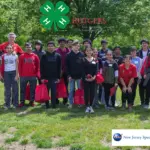NASA / New Jersey Space Grant Consortium Sponsors Student STEM Exploration
Twenty STEM interested high school students joined Rutgers scientists Hugh Roarty, Rick Lathrop, Kendall Eldridge and Lucas Marxen in examining the effectiveness of prescribed fire to attain increase the biodiversity…

